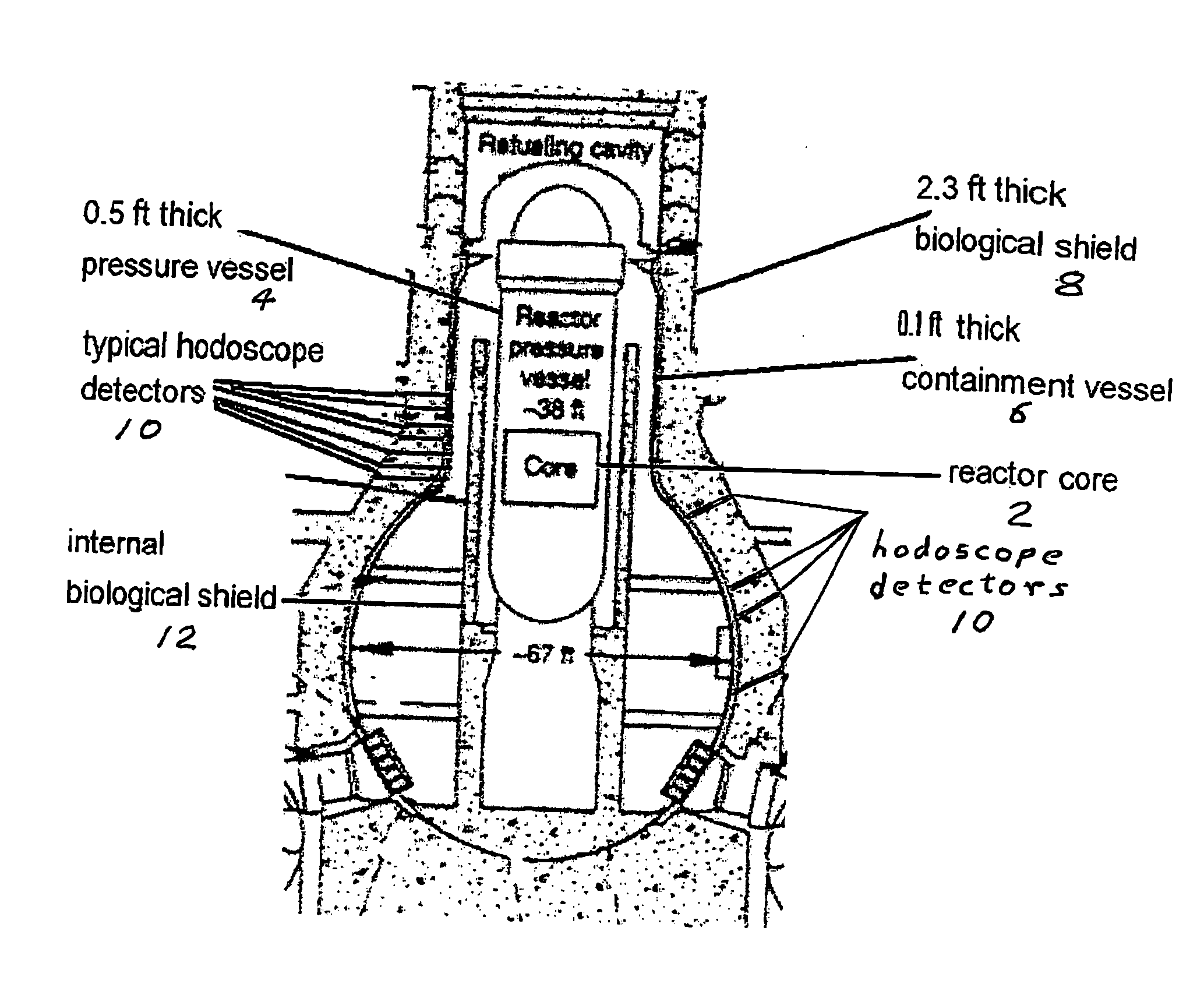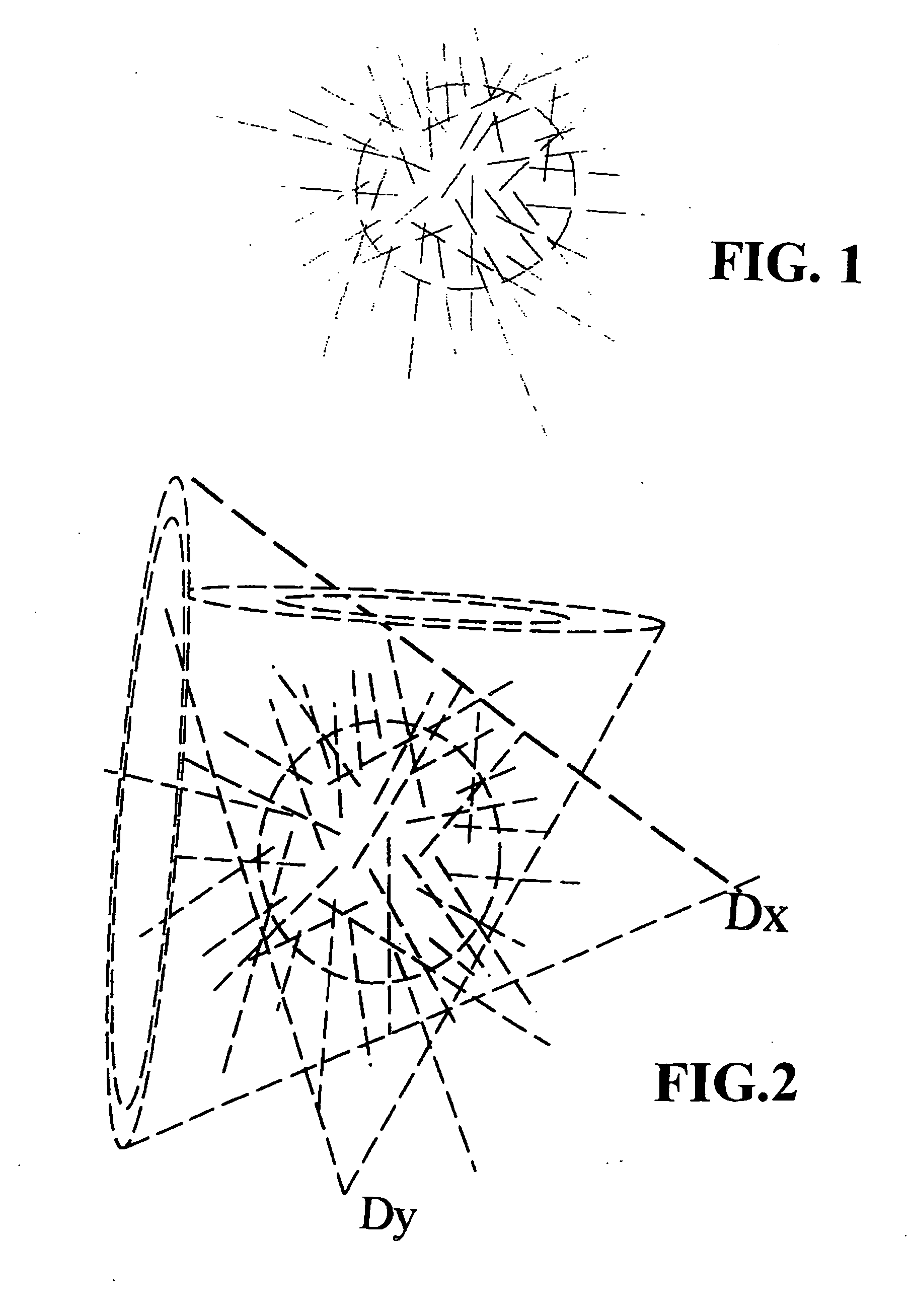Radiation-monitoring system with correlated hodoscopes
a technology of correlated hodoscopes and radiation monitoring systems, applied in the direction of optical radiation measurement, greenhouse gas reduction, instruments, etc., can solve the problems of unfavorable environmental protection, unfavorable environmental protection, and large financial costs for cleanup and power-generation displacement, so as to achieve lower ftest values and high ftest results
- Summary
- Abstract
- Description
- Claims
- Application Information
AI Technical Summary
Benefits of technology
Problems solved by technology
Method used
Image
Examples
first preferred embodiment
[0048]A first preferred embodiment of the present invention (which is referred to herein as the hodoscope orthogonal correlation (HOC) method) is described below with reference to the FIGS. 1 through 4. The underlying technical analysis is intended to explain the hodoscope orthogonal positional-correlation detection method, as well as to assist recognition of its inherent benefits compared to the traditional two-step background-subtraction radiation measurement procedure. Fundamentally, the positional-correlation method is a means of significantly improving detection of a radiation source S when a large background B of competing radiation is present. This is a common problem encountered in radiation detection and identification, that is, in radiation diagnostics.
[0049]The term “hodoscope” represents a radiation-detection system that because of radiation collimation has an effective limited field of view, and because the type of chosen sensing material has a detection capacity that m...
first embodiment
Preferred Single-Channel Hodoscope
[0086]FIGS. 6A and 6B show some essential features of two versions (13 in FIGS. 6A and 15 in FIG. 6B) of a single-channel hodoscope that could be used in the present invention. The FIG. 6A version includes a thick, long tungsten (lead or steel could be substituted) collimating tube having a 2-cm channel drilled through the center of the tube. At the end of the tube is installed an off-the-shelf gamma scintillation detector, such as Model 943-37 available from Fluke Biomedical with offices in Everett, Wash. This model is 5 cm in diameter and includes a 5-cm long sodium iodide (NaI) crystal 14, a photomultiplier tube assembly 16 and a preamplifier 18. Mounted in front of the detector might be a thin lead and / or cadmium filter, the position of which is shown at 20, used to block low-energy neutrons and / or gamma-ray background. This channel limits the field of view of this specific hodoscope collimator to about 4 degrees. In the unit shown in FIG. 2B, ...
PUM
 Login to View More
Login to View More Abstract
Description
Claims
Application Information
 Login to View More
Login to View More - R&D
- Intellectual Property
- Life Sciences
- Materials
- Tech Scout
- Unparalleled Data Quality
- Higher Quality Content
- 60% Fewer Hallucinations
Browse by: Latest US Patents, China's latest patents, Technical Efficacy Thesaurus, Application Domain, Technology Topic, Popular Technical Reports.
© 2025 PatSnap. All rights reserved.Legal|Privacy policy|Modern Slavery Act Transparency Statement|Sitemap|About US| Contact US: help@patsnap.com



